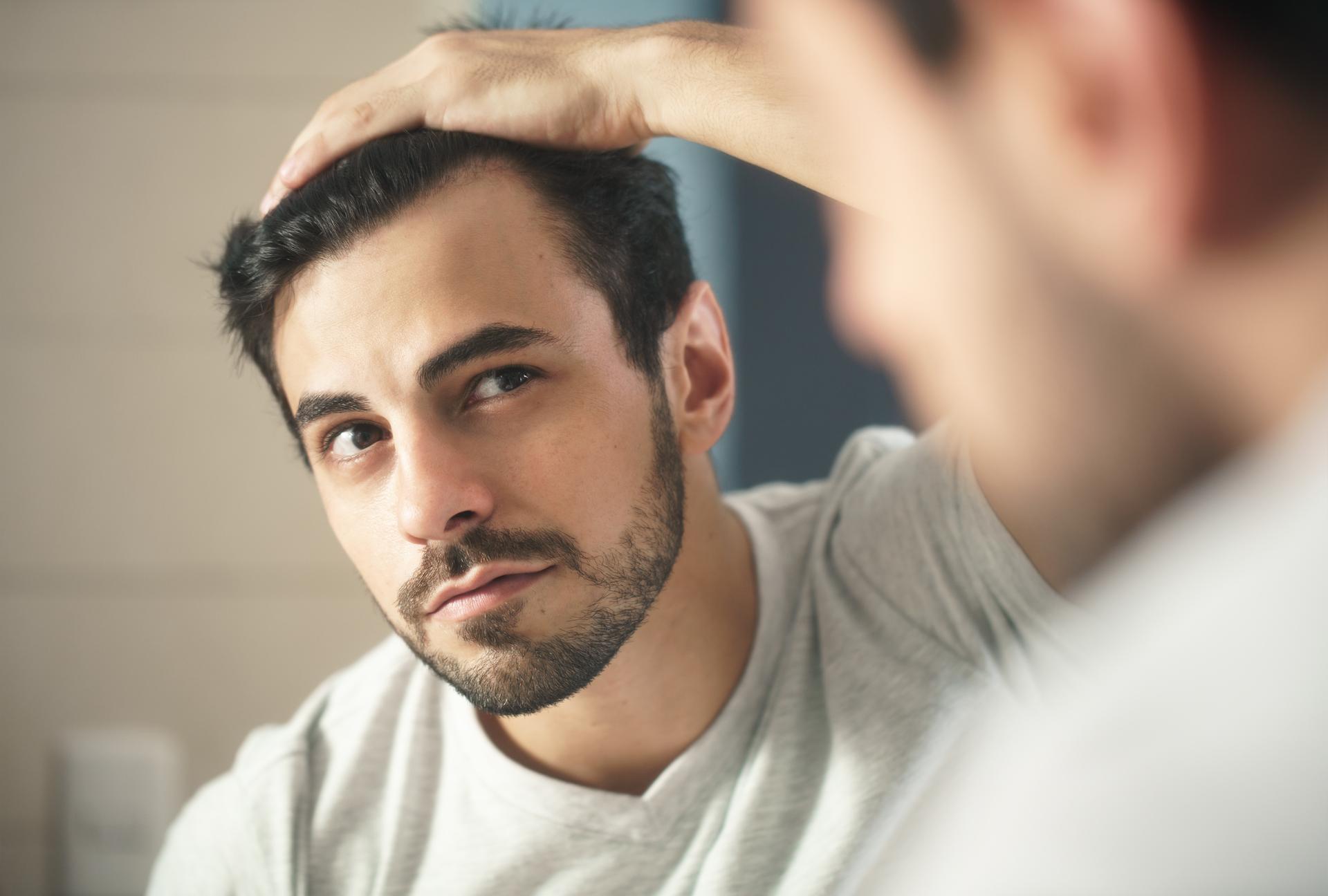A receding hairline is a prevalent condition among men as well as women. However, it is more common in men and can be one of the first signs of male pattern baldness. There are several factors that can lead to a receding hairline, from family history to age, to hormonal changes and other illnesses. In women, it is more common to experience thinning of hair than a receding hairline, but it is not impossible.
However, thanks to advances in medical studies and technology, there are several treatment options available to restore a receding hairline, depending on the cause. There are some distinct signs and symptoms associated with a receding hairline, which are more likely to develop post-puberty or during adulthood.
What are the signs of hairline recession?
Following are some signs to watch out for a receding hairline:
1. Uneven hairline
While it is normal for the hairline to mature in a natural way, a receding hairline is different. When your hairline is maturing, the entire hairline pulls back evenly. In the case of a receding hairline, you will notice that the hairline pulls back unevenly. Most men may notice an M-shaped hairline, receding from the temples, from the sides, from the middle of the forehead, or at the back of the head.
2. Thinning of hair above the temples
This pattern is common in men, with the middle area of the hair receding from the temples. In women, thinning can also begin at the temples and gradually spread across the top of the head. However, it is more common for women to experience thinning of hair, uniformly across the scalp.
3. More hair fall than usual
It is normal for people to shed between 50-100 hair strands every day. If you notice more hair fall than that, it might be a subtle symptom of hair thinning or a receding hairline.
What are the causes that lead to a receding hairline?
1. Age
It is most common for the hairline to recede or hair to fall with age. The human scalp has thousands of hairs growing from follicles under the skin. These hairs eventually fall out but are replaced with new ones. Age can damage the hair follicles, causing hair loss and a receding hairline.
2. Genetics
A receding hairline can be associated with family genes. People who have a history of baldness running in the family are more likely to experience hairline recession or hair loss.
3. Hormonal changes
Hormonal imbalances in men and women can trigger hair loss. In men, the hormone DHT (dihydrotestosterone) contributes to male pattern baldness, by causing the hair follicles to shrink. In females, factors like menopause can potentially lead to thinning of hair, though not always.
4. Unhealthy lifestyle choices
Diet choices like processed foods, sugary foods, foods with preservatives, and saturated fats can contribute to hair loss. Lifestyles choices like smoking can also lead to hairline recession.
What are the treatment options for a receding hairline?
Along with medical and surgical options, there are few other ways to get your hairline back:
How to restore the hairline in a natural way?
- Healthy lifestyle – Maintaining a healthy lifestyle with regular exercise, eating a nutritious diet packed with antioxidants, spending time in nature or meditating, and reducing stress can help manage symptoms.
- Essential Vitamins – Essential vitamins like Vitamin E, Vitamin B-12, Vitamin A, Iron, and Zinc can help reduce hair fall.
- Haircare – Use a shampoo that is gentle and stimulates the hair follicles. Use natural hair products and avoid harsh chemicals that may damage the hair follicles.
- Oil therapy – Certain oils are known to promote hair growth. These include lavender oil, rosemary oil, and peppermint oil. Mix these oils with a carrier oil like almond oil, coconut oil, or jojoba oil, and apply on the scalp.
- Scalp massage – Massaging the scalp leads to increased blood circulation, and the stimulation of hair follicles, helping the hair grow healthier and thicker.
- Herbal treatment – There are several known herbs that can lead to fuller, healthier hair. Topical application of herbs like aloe vera, gooseberry, Chinese hibiscus, and ginseng are used to treat hair loss.
What are the medications available to get your hairline back?
- Finasteride – Finasteride, also known as Propecia, is a prescription drug that lowers the conversion of testosterone into DHT, the hormone that causes hair loss in men. By reducing the level of DHT, finasteride promotes hair growth.
- Minoxidil –Also known as Rogaine, Minoxidil is an over-the-counter drug used for hair loss treatment. Minoxidil increases the blood flow and circulation to the scalp, thereby rejuvenating the hair follicles.
- Anthralin –Widely used as a drug to treat psoriasis, Anthralin is also used as a form of treatment for hair loss.
Hair Restoration Methods
- Laser treatment – Also known as Low-level laser therapy (LLLT), laser therapy is a widely accepted non-invasive, painless procedure to promote hair growth. In this therapy, scalp tissues are exposed to photons to replenish the weak cells and stimulate hair growth.
- Hair transplant – A surgical procedure wherein hair follicles are extracted from a portion of the scalp that has dense hair, such as the back of your head, and transplanted on the area that is balding or has thin hair. The two most common methods of hair transplant are Follicular unit transplantation (FUT) or Follicular unit extraction (FUE)
If you are looking for the best FUT and FUE hair transplant in New Jersey, Dr. Emil Shakov, MD, FACS at the New Jersey Hair Restoration Center is the best surgeon to consult. Dr. Shakov is a highly experienced, board-certified hair restoration surgeon. He was trained with the world-renowned Hair Transplant 360 program in FUE and FUT treatments. Dr. Emil Shakov also provides in-person and video consultation at the New Jersey Hair Restoration Center.


